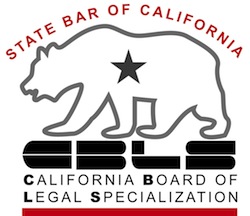You can file bankruptcy tomorrow, so long as you don’t currently have a bankruptcy case pending.
When you can get a discharge in that case is a different story.
The Bankruptcy Code limits the frequency of getting a discharge, not the filing and completion of the bankruptcy case.
My friend Gene Melchionne wrote a marvelous piece about the timing of the bankruptcy discharge that conjures up the old high school cheer: 2, 4, 6, 8, who do we appreciate.
The waiting period between cases, if you want a discharge, can be 2 years, 4 years, 6 years or 8 years, depending on what kind of case you filed before and what kind of case you want to file now.
You count those years from the filing of the first case to the filing of the second case.
But, contrary to the usual thinking, the discharge isn’t everything.
Sounds like heresy from a bankruptcy lawyer, doesn’t it, but let me tell you a couple of stories.
The no discharge Chapter 7
My client had a house with equity, a recent bankruptcy discharge, and a criminal conviction that had him heading to prison, soon.
He faced a future with no income and no way to pay the mortgage. And at the point he didn’t live in the property, his right to claim a California homestead in the property was in doubt.
But the recent bankruptcy case meant he couldn’t get a discharge in a new Chapter 7 case; and prison wages were not going to support a Chapter 13.
But what we wanted was the automatic stay, the sale of the house, and the homestead paid to the client.
The balance of the equity was beyond saving, on these facts. We were content to have the balance go to pay toward the restitution judgment.
So, we filed a Chapter 7. The fact that my client wasn’t eligible for a discharge wasn’t important . What we needed was a sale managed by the trustee while my client was behind bars and the homestead carved out and paid to the debtor.
No discharge Chapter 13
Much more common than prison-bound debtors are no-discharge Chapter 13 cases. When they follow hard on a Chapter 7, we sometimes call them Chapter 20 cases: 7 + 13=20.
After BAPCPA’s changes to the bankruptcy code in 2005, the four year rule applies to getting a Chapter 13 discharge after a Chapter 7. There must be four years between the filing of the 7 and the filing of the 13 in order to get a discharge of your debts in the Chapter 13.
But the discharge isn’t everything.
Pay debts that survived
Often what you need in a Chapter 20 is the automatic stay and time to pay debts that didn’t get discharged in the Chapter 7. Those debts might be priority taxes, back family support, or even student loans.
It is the payment plan and the predictability that you need, not necessarily the discharge.
Catch up mortgage
Chapter 13 works to give you time and protection to bring a mortgage current. Because the mortgage is a lien and wasn’t wiped out in the Chapter 7, failure to get right with the lender will lead to foreclosure.
Liens that survive the discharge
File a Chapter 13, and you’ve got time to get current.
Strip off the worthless lien
While you can’t strip off liens in Chapter 7 unless they impair an exemption, in Chapter 13 you can void an utterly underwater mortgage AND strip or bifurcate a tax lien.
Two recent 9th Circuit decisions make it clear that it is completion of the Chapter 13 plan, not the discharge, that entitles you to strip a lien, and that the balance on a lien that survived the Chapter 7 doesn’t count for the Chapter 13 debt limits.
When can you file
So, like lots of legal questions, it depends. It depends on whether you can achieve your goal without getting a discharge.
More
When another bankruptcy case doesn’t protect you
Steps before you meet a bankruptcy lawyer
Image courtesy of Flickr and Hichako.






